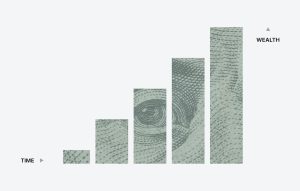Forex trading is a complex game that requires a lot of skills and expertise. One of the key skills required to succeed in forex trading is the ability to locate the big money on a forex chart. The big money refers to the price levels where significant buying or selling activities are taking place. In this article, we will explain how to locate the big money on a forex chart.
Understanding the Basics
Before we dive into the details of locating the big money on a forex chart, it is essential to understand some basic concepts. The forex market is a decentralized market where buyers and sellers from all over the world come together to trade currencies. The price of a currency pair is determined by the demand and supply of the currencies involved. When there is more demand for a currency, its price goes up, and when there is more supply, its price goes down.
The forex chart is a visual representation of the price of a currency pair over time. It shows the opening and closing prices, as well as the highest and lowest prices, for a given period. The chart can be displayed in various time frames, such as minutes, hours, days, or weeks. Traders use the forex chart to analyze the price movements and identify potential trading opportunities.
Identifying Key Levels
The first step in locating the big money on a forex chart is to identify the key levels. Key levels refer to the price levels where significant buying or selling activities are taking place. These levels can be identified using various methods, such as support and resistance levels, trend lines, and Fibonacci retracements.
Support and resistance levels are the levels where the price of a currency pair tends to bounce back from. A support level is a price level where the demand for a currency is strong enough to prevent the price from falling further. A resistance level is a price level where the supply of a currency is strong enough to prevent the price from rising further. Traders can identify support and resistance levels by looking at the previous highs and lows on the forex chart.
Trend lines are another tool that traders use to identify key levels. A trend line is a line that connects the highs or lows of a price trend. Traders use trend lines to identify the direction of the trend and potential reversal points. When the price of a currency pair breaks through a trend line, it can indicate a change in the trend.
Fibonacci retracements are a mathematical tool that traders use to identify potential support and resistance levels. Fibonacci retracements are based on the Fibonacci sequence, which is a series of numbers where each number is the sum of the two preceding numbers. Traders use the Fibonacci retracements to identify potential support and resistance levels based on the percentage retracements from the previous high or low.
Identifying Market Sentiment
Once the key levels have been identified, the next step in locating the big money on a forex chart is to identify the market sentiment. Market sentiment refers to the overall mood of the market, whether it is bullish or bearish. Traders can identify market sentiment by looking at the price movements and volume on the forex chart.
When the price of a currency pair is rising, and the volume is increasing, it indicates a bullish sentiment. Traders can take advantage of the bullish sentiment by buying the currency pair. On the other hand, when the price of a currency pair is falling, and the volume is increasing, it indicates a bearish sentiment. Traders can take advantage of the bearish sentiment by selling the currency pair.
Using Indicators
Traders can also use indicators to locate the big money on a forex chart. Indicators are mathematical calculations based on the price and volume of a currency pair. They are used to identify potential trading opportunities and confirm the market sentiment.
There are many indicators available for traders to use, such as moving averages, relative strength index (RSI), and stochastic oscillator. Moving averages are used to identify the trend direction and potential reversal points. RSI and stochastic oscillator are used to identify overbought and oversold conditions in the market.
Conclusion
Locating the big money on a forex chart is essential for traders to make profitable trades. Traders can locate the big money by identifying key levels, market sentiment, and using indicators. It is important to remember that forex trading is a high-risk activity, and traders should always use proper risk management techniques to minimize their losses.






